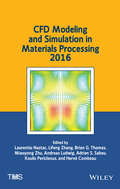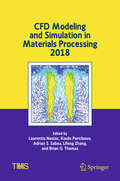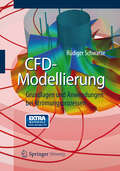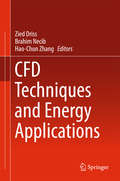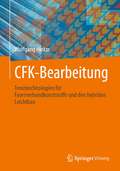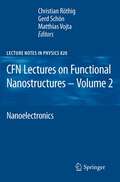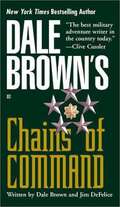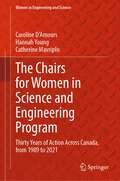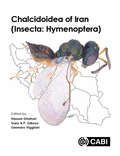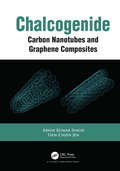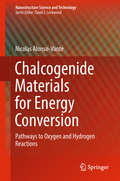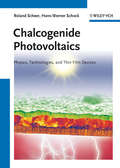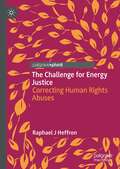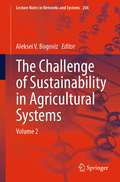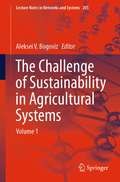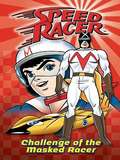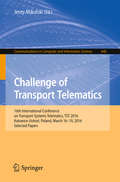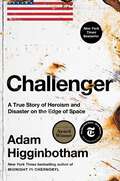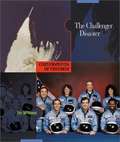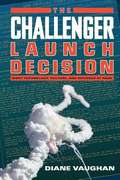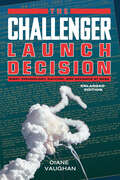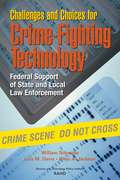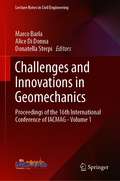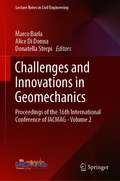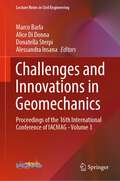- Table View
- List View
CFD Modeling and Simulation in Materials Processing
by Herve Combeau Miaoyong Zhu Adrian S. Sabau Lifeng Zhang Brian G. Thomas Koulis Pericleous Laurentiu Nastac Andreas LudwigThis collection explores computational fluid dynamics (CFD) modeling and simulation of engineering processes, with contributions from researchers and engineers involved in the modeling of multiscale and multiphase phenomena in material processing systems. The papers cover the following processes: Iron and Steelmaking (Tundish, Casting, Converter, Blast Furnace); Microstructure Evolution; Casting with External Field Interaction; and Smelting, Degassing, Ladle Processing, Mechanical Mixing, and Ingot Casting. The collection also covers applications of CFD to engineering processes, and demonstrates how CFD can help scientists and engineers to better understand the fundamentals of engineering processes.
CFD Modeling and Simulation in Materials Processing 2018 (The Minerals, Metals & Materials Series)
by Adrian S. Sabau Lifeng Zhang Brian G. Thomas Koulis Pericleous Laurentiu NastacThis collection presents contributions on computational fluid dynamics (CFD) modeling and simulation of engineering processes from researchers and engineers involved in the modeling of multiscale and multiphase phenomena in material processing systems. The following processes are covered: Additive Manufacturing (Selective Laser Melting and Laser Powder Bed Fusion); Ironmaking and Steelmaking (Ladle Metallurgical Furnace, EAF, Continuous Casting, Blown Converter, Reheating Furnace, Rotary Hearth Furnace); Degassing; High Pressure Gas Atomization of Liquid Metals; Electroslag Remelting; Electrokinetic Deposition; Friction Stir Welding; Quenching; High Pressure Die Casting; Core Injection Molding; Evaporation of Metals; Investment Casting; Electromagnetic Levitation; Ingot Casting; Casting and Solidification with External Field (electromagnetic stirring and ultrasonic cavitation) Interaction and Microstructure Evolution The collection also covers applications of CFD to engineering processes, and demonstrates how CFD can help scientists and engineers to better understand the fundamentals of engineering processes.
CFD-Modellierung: Grundlagen und Anwendungen bei Strömungsprozessen
by Rüdiger SchwarzeIn diesem kompakten Lehrbuch legt der Autor die Methodik der numerischen Simulation von Strömungsprozessen dar. Nach einer konzisen Erläuterung der Grundlagen lernen Leser das Potenzial der Methodik anhand von Anwendungsbeispielen kennen. Demonstriert werden sowohl einfache wie komplexe Probleme. Während Leser die einfachen Problemstellungen mithilfe von Open-Source-Softwarepaketen selbst bearbeitet können, sind die komplexen Beispiele aus aktuellen grundlagenorientierten und aus anwendungsnahen Forschungsprojekten des Autors abgeleitet.
CFD Techniques and Energy Applications
by Zied Driss Brahim Necib Hao-Chun ZhangThis book focuses on CFD (Computational Fluid Dynamics) techniques and the recent developments and research works in energy applications. It is devoted to the publication of basic and applied studies broadly related to this area. The chapters present the development of numerical methods, computational techniques, and case studies in the energy applications. Also, they offer the fundamental knowledge for using CFD in energy applications through new technical approaches. Besides, they describe the CFD process steps and provide benefits and issues for using CFD analysis in understanding the flow complicated phenomena and its use in the design process. The best practices for reducing errors and uncertainties in the CFD analysis are further described. The book reveals not only the recent advances and future research trends of CFD Techniques but also provides the reader with valuable information about energy applications. It aims to provide the readers, such as engineers and PhD students, with the fundamentals of CFD prior to embarking on any real simulation project. Additionally, engineers supporting or being supported by CFD analysts can take advantage from the information of the book’s different chapters.
CFK-Bearbeitung: Trenntechnologien für Faserverbundkunststoffe und den hybriden Leichtbau
by Wolfgang HintzeDas Buch beschreibt systematisch die industriell bedeutsamen Bearbeitungstechnologien für kohlenstofffaserverstärkte und artverwandte Kunststoffe sowie für den hybriden Leichtbau.Die technologischen Grundlagen der spanenden Verfahren, der abtragenden Verfahren mittels Abrasivwasserstrahl und mittels Laserstrahl sowie die Grundlagen des spanlosen Trennens werden methodisch dargestellt. Geeignete Modellansätze werden beschrieben. Die Bearbeitbarkeit faserverstärkter Kunststoffe nach den unterschiedlichen Verfahren wird erläutert. Besondere Beachtung finden verfahrensabhängig die erreichbare Qualität, die Einsatzgrenzen, die Aufwände für Werkzeuge und anderweitige Verbrauchsmittel sowie jeweilige Aspekte des Arbeits- und Anlagenschutzes. Damit wird die Leserschaft in die Lage versetzt, für neue Bearbeitungsaufgaben und für bauteilspezifisch konstruierte Faserverbundkunststoffe anforderungsgerechte Lösungen zu entwickeln sowie bestehende Bearbeitungsprozesse systematisch zu analysieren und zu optimieren. Schließlich liefert das Buch eine physikalisch fundierte Grundlage für die Entwicklung datenbasierter Prozessmodelle und zeigt technologische Trends auf.
CFN Lectures on Functional Nanostructures - Volume 2: Nanoelectronics (Lecture Notes in Physics #820)
by Christian Röthig Matthias Vojta Gerd SchönThis series of books contains selected and edited lectures from summer schools organized by the Center for Functional nanostructures (CFN) at the University of Karlsruhe. The mission of the CFN is to carry out research in the following areas: nanophotonics, nanoelectronics, molecular nanostructures and nanostructured materials. The aim of the summer schools is mainly to exchange new ideas and illustrate emerging research methodologies through a series of topical, introductory lectures. This is reflected by both the selection of topics addressed in the present volume, nanoelectronics, as well as the tutorial aspect of the contributions.
Chains of Command (Independent #3)
by Dale BrownUnder a new president, the future of the Air Force- and the nation-hangs in the balance... In Desert Storm, Major Daren Mace made a fateful decision to go against orders--to abort a secret mission which was, in his judgment, ill-advised. His actions landed him in military exile. Now Mace has moved on to the Air Force Reserves. There's a new U.S. president. It's a new era. And a new war is escalating along the Ukraine border. This time, Mace has a partner--Rebecca Furness, the military's first woman combat flyer. And this time, the chains of command are tightening around him...
The Chairs for Women in Science and Engineering Program: Thirty Years of Action Across Canada, from 1989 to 2021 (Women in Engineering and Science)
by Caroline D'Amours Hannah Young Catherine MavriplisThis book describes the origins and evolution of Canada’s 30-year Natural Sciences and Engineering Research Council Chairs for Women in Science and Engineering Program. The book starts literally with a bang, right as Montreal and all of Canada were rocked by the 1989 Ecole Polytechnique Massacre of 14 women, describing how the Chair program took on a frenetic pace as a single Chairholder, Monique Frize, tried to respond to an entire country’s concerns about women in engineering, both as students and as professionals. The authors first cover the program from 1989 through 1997, when the program was expanded to five regional Chairs, of which there have been over three generations by now. The book then provides synopses of each Chairholder’s comprehensive regional program to recruit, retain and advance girls and women in STEM, organized by generation, providing a unique historical view of the changing landscape for research and outreach programs to increase the participation of women inmale-dominated scientific fields. Readers will find an effective model for national programs addressing equity, diversity, and inclusion in STEM and be inspired by the 16 strong role models who pioneered blended careers in STEM and gender equity advocacy.
Chalcidoidea of Iran (Insecta: Hymenoptera)
by Hassan Ghahari Gary A.P. Gibson Gennaro ViggianiThe superfamily Chalcidoidea (Insecta, Hymenoptera) contains in excess of 26,000 described species worldwide, but with an estimated total diversity of more than 500,000 species the vast majority of species have yet to be discovered and described. Most chalcidoid species are parasitoids of hosts in at least 12 different insect orders, attacking the egg, larval or pupal stages, though phytophagy and other life cycles and hosts are known. Iran is the 18th largest country in the world and has a rich and diverse insect fauna, including Chalcidoidea. It is extremely interesting from a biogeographic point of view, and a paradise for an entomologist. This book summarizes the results of all prior research concerning species diversity of Iranian Chalcidoidea, including host records and distribution records by province in Iran as well as world distribution by country for 1,351 species of Chalcidoidea recorded from Iran through the end of 2019. The faunal diversity for each of the 20 families of Chalcidoidea known from Iran is also compared with that known for 15 adjacent countries. In addition, general information on world diversity, recognition, phylogenetic relationships and host relationships are given for each family. As such, the book will be an invaluable source of information for all those involved with chalcidoids, for anyone with an interest in insect systematics, and all those working in crop protection, especially biological control and Integrated Pest Management.
Chalcogenide: Carbon Nanotubes and Graphene Composites
by Abhay Kumar Singh Tien-Chien JenThis is introductory book for researchers, scientists and students in the area of organic and inorganic composite materials. This book has addressed timely the innovative topic "chalcogenide-multiwalled carbon nanotubes and chalcogenide-bilayer graphene" composite materials under a glassy regime. This book will give a clear idea on the concepts of the newly established composite materials area, by providing interpretations of inside physio-chemical mechanism. The remarkable landmark innovations related to this newly introduced research field are included in this book. Additionally, the possible futuristic applications in the area of nanoelectronics, optoelectronics, biomedical etc are also addressed.
Chalcogenide Materials for Energy Conversion: Pathways To Oxygen Reduction And Hydrogen Evolution Reactions (Nanostructure Science And Technology Ser.)
by Nicolas Alonso-VanteThis book addresses electrocatalysis based on chalcogenides, particularly in the nanoscale domain. Special attention is paid to the hydrogen evolution reaction (HER) and the oxygen reduction reaction (ORR). The book provides an introduction to materials synthesis; the basic principles of electrocatalysis; related precious metal versus non-precious metal catalytic center chalcogenides as well as supports; and the role of such supports in stabilizing the catalytic centers. In short: pursuing a bottom-up approach, it covers the properties of this class of electrocatalysts and examines their applications in low-temperature fuel systems such as microfluidic fuel cells for portable devices. Accordingly, it is ideally suited for all professionals and researchers interested in electrochemistry, renewable energy and electrocatalysis, and non-precious metal centers for chemical energy conversion.
Chalcogenide Photovoltaics: Physics, Technologies, and Thin Film Devices
by Roland Scheer Hans-Werner SchockThis first comprehensive description of the most important material properties and device aspects closes the gap between general books on solar cells and journal articles on chalcogenide-based photovoltaics. Written by two very renowned authors with years of practical experience in the field, the book covers II-VI and I-III-VI2 materials as well as energy conversion at heterojunctions. It also discusses the latest semiconductor heterojunction models and presents modern analysis concepts. Thin film technology is explained with an emphasis on current and future techniques for mass production, and the book closes with a compendium of failure analysis in photovoltaic thin film modules. With its overview of the semiconductor physics and technology needed, this practical book is ideal for students, researchers, and manufacturers, as well as for the growing number of engineers and researchers working in companies and institutes on chalcogenide photovoltaics.
The Challenge for Energy Justice: Correcting Human Rights Abuses
by Raphael J HeffronWritten by one of the world’s leading scholars in the field, this book provides a unique perspective on the connections between energy justice and human rights. Taking an interdisciplinary approach, the author offers an accessible discussion about the implementation of energy justice in practice. The book explores the rise of justice issues in the energy sector, the interdisciplinary nature of energy justice, the economics of energy justice and provides a practical case study on distributive justice. The penultimate chapter focuses on human rights and energy justice in a world first, and explores the topic from the perspective of the opportunity of last resort. This ‘opportunity of last resort’ is the national courts and is the place where societies can seek to have justice enforced through a variety of human rights being protected. Finally, energy justice risks are highlighted alongside the author’s proposed framework for the next generation of energy justice scholars.
The Challenge of Sustainability in Agricultural Systems: Volume 2 (Lecture Notes in Networks and Systems #206)
by Aleksei V. BogovizThis book brings together segmental knowledge and creates new insights on the sustainability of agricultural systems, critically analyzing not only individual system components, but also focusing on interactions between them and external environments. This book is primarily devoted to (1) agricultural agribusiness, (2) policies and institutions, and (3) farming systems. The compelling collection of chapters presents critical, comparative, and balanced perspectives on what changes are needed to achieve and maintain sustainability in agricultural systems, actively leading to new ways of thinking about these complex issues. The research presented relies on an array of methods developed within complex systems science, addresses the existing gaps in the scholarship, and uses original data collected on the development of agricultural systems. Finally, the authors provide robust conclusions and recommendations for both scholars and practitioners in the field of studying, constructing, and maintaining sustainable agricultural systems. The special focus of the book is on technologies, policies, and management systems enabling sustainable agricultural development. A rich collection of practical cases could be used to move from theories to reality. The book appeals to both academics and professionals working in the field.
The Challenge of Sustainability in Agricultural Systems: Volume 1 (Lecture Notes in Networks and Systems #205)
by Aleksei V. BogovizThis book presents a multidisciplinary collection of original contributions made by the leading scholars and practitioners on researching, building, and maintaining sustainable agricultural systems. Being the first of its kind, the book is divided into two volumes. This book presents a comprehensive and informed review of the current state of multidisciplinary knowledge on sustainability in agriculture. The gaps in the scholarly literature are identified and rigorously analyzed, presenting a clear picture of the promising research directions. The authors critically analyze the very concept of sustainable agricultural systems, primarily focusing on the interactions existing between their integral components and with external environments. Relying on the provisions of complex systems science, the scholars then discuss the best approaches and methodologies used to build a comprehensive understanding of agricultural systems, with relation to achieving and maintaining their sustainability. More than that, this book holds two rich sections on (1) agricultural economics and (2) rural sustainability. Understanding sustainable development as a movement toward clearly defined and measurable goals, a set of chapters explore those policies, practices, technologies, and management systems that have an impact on the sustainability of agricultural systems. Agricultural sustainability is an urgent issue to be addressed, and this book makes a unique contribution. Due to its practical focus, the book appeals to practitioners and policymakers working in agricultural economics, governance, and sustainability, not just academics. This is also a valuable resource for graduate students interested in agricultural systems, sustainability, as well as complex systems theory and practice.
Challenge of the Masked Racer (Speed Racer #2)
by Chase WheelerSpeed is determined to beat the legendary Masked Racer in the Trans-Country Race. But the Alpha Team has cooked up a devious plan. Can Speed and the Masked Racer work together to make sure the Alpha Team doesn't win?
Challenge of Transport Telematics: 16th International Conference on Transport Systems Telematics, TST 2016, Katowice-Ustroń, Poland, March 16–19, 2016, Selected Papers (Communications in Computer and Information Science #640)
by Jerzy MikulskiThis book constitutes the thoroughly refereed proceedings of the 16th International Conference on Transport Systems Telematics, TST 2016, held in Katowice-Ustr#65533;n, Poland, in March 2016. The 37 full and 5 short papers presented in this volume were carefully reviewed and selected from 110 submissions. They present and organize the knowledge from within the field of intelligent transportation systems, the specific solutions applied in it and their influence on improving efficiency of transport systems.
Challenger: A True Story of Heroism and Disaster on the Edge of Space
by Adam HigginbothamWinner of the 2024 National Book Critics Circle Award in Nonfiction • Winner of the 2024 Kirkus Nonfiction Prize • Shortlisted for the 2025 Andrew Carnegie Medal for Excellence in Nonfiction • A New York Times Notable Book of 2024 NEW YORK TIMES BESTSELLER • &“Stunning…A heart-pounding thriller…Challenger is a remarkable book.&” —The Atlantic • &“Devastating…A universal story that transcends time.&” —The New York Times • &“Dramatic…a moving narrative.&” —The Wall Street Journal From the New York Times bestselling author of Midnight in Chernobyl comes the definitive, &“compelling, and exhaustively researched&” (The Washington Post) minute-by-minute account of the Challenger disaster, based on fascinating and new archival research—a riveting history that reads like a thriller.On January 28, 1986, just seventy-three seconds into flight, the space shuttle Challenger broke apart over the Atlantic Ocean, killing all seven people on board. Millions of Americans witnessed the tragic deaths of the crew, which included New Hampshire schoolteacher Christa McAuliffe. Like the assassination of JFK, the Challenger disaster is a defining moment in 20th-century history—one that forever changed the way America thought of itself and its optimistic view of the future. Yet the full story of what happened, and why, has never been told. Based on extensive archival research and meticulous, original reporting, Challenger: A True Story of Heroism and Disaster on the Edge of Space follows a handful of central protagonists—including each of the seven members of the doomed crew—through the years leading up to the accident, and offers a detailed account of the tragedy itself and the investigation afterward. It&’s a compelling tale of ambition and ingenuity undermined by political cynicism and cost-cutting in the interests of burnishing national prestige; of hubris and heroism; and of an investigation driven by leakers and whistleblowers determined to bring the truth to light. Throughout, there are the ominous warning signs of a tragedy to come, recognized but then ignored, and later hidden from the public. Higginbotham reveals the history of the shuttle program and the lives of men and women whose stories have been overshadowed by the disaster, as well as the designers, engineers, and test pilots who struggled against the odds to get the first shuttle into space. A masterful blend of riveting human drama and fascinating and absorbing science, Challenger identifies a turning point in history—and brings to life an even more complex and astonishing story than we remember.
The Challenger Disaster (Cornerstones of Freedom, 2nd Series)
by Tim McneeseRecounts events surrounding the explosion of the space shuttle Challenger in 1986, the first shuttle to carry a civilian passenger, and discusses the impact of this disaster on the U.S. space program. Includes bibliographical references and index.
The Challenger Launch Decision: Risky Technology, Culture, and Deviance at NASA
by Diane VaughanWhen the Space Shuttle Challenger exploded on January 28, 1986, millions of Americans became bound together in a single, historic moment. Many still vividly remember exactly where they were and what they were doing when they heard about the tragedy. In The Challenger Launch Decision, Diane Vaughan recreates the steps leading up to that fateful decision, contradicting conventional interpretations to prove that what occurred at NASA was not skulduggery or misconduct but a disastrous mistake. Journalists and investigators have historically cited production problems and managerial wrong-doing as the reasons behind the disaster. The Presidential Commission uncovered a flawed decision-making process at the space agency as well, citing a well-documented history of problems with the O-ring and a dramatic last-minute protest by engineers over the Solid Rocket Boosters as evidence of managerial neglect. Why did NASA managers, who not only had all the information prior to the launch but also were warned against it, decide to proceed? In retelling how the decision unfolded through the eyes of the managers and the engineers, Vaughan uncovers an incremental descent into poor judgment, supported by a culture of high-risk technology. She reveals how and why NASA insiders, when repeatedly faced with evidence that something was wrong, normalized the deviance so that it became acceptable to them. No safety rules were broken. No single individual was at fault. Instead, the cause of the disaster is a story not of evil but of the banality of organizational life. This powerful work explains why the Challenger tragedy must be reexamined and offers an unexpected warning about the hidden hazards of living in this technological age.
The Challenger Launch Decision: Risky Technology, Culture, and Deviance at NASA, Enlarged Edition
by Diane VaughanWhen the Space Shuttle Challenger exploded on January 28, 1986, millions of Americans became bound together in a single, historic moment. Many still vividly remember exactly where they were and what they were doing when they heard about the tragedy. Diane Vaughan recreates the steps leading up to that fateful decision, contradicting conventional interpretations to prove that what occurred at NASA was not skullduggery or misconduct but a disastrous mistake. Why did NASA managers, who not only had all the information prior to the launch but also were warned against it, decide to proceed? In retelling how the decision unfolded through the eyes of the managers and the engineers, Vaughan uncovers an incremental descent into poor judgment, supported by a culture of high-risk technology. She reveals how and why NASA insiders, when repeatedly faced with evidence that something was wrong, normalized the deviance so that it became acceptable to them. In a new preface, Vaughan reveals the ramifications for this book and for her when a similar decision-making process brought down NASA's Space Shuttle Columbia in 2003.
Challenges and Choices for Crime-Fighting Technology Federal Support of State and Local Law Enforcement
by William Schwabe Brian A. Jackson Lois M. DavisUnder the American federal system, most law is cast as state statutes and local ordinances; accordingly, most law enforcement is the responsibility of state and local agencies. Federal law and federal law enforcement come into play only where there is rationale for it, consistent with the Constitution. Within this framework, a clear role has been identified for federal support of state and local agencies. This report provides findings of a study of technology in use or needed by law enforcement agencies at the state and local level, for the purpose of informing federal policymakers as they consider technology-related support for these agencies. In addition, it seeks to characterize the obstacles that exist to technology adoption by law enforcement agencies and to characterize the perceived effects of federal assistance programs intended to facilitate the process. The study findings are based on a nationwide Law Enforcement Technology Survey and a similar Forensics Technology Survey (FTS) conducted in late spring and early summer2000, interviews conducted throughout the year, focus groups conducted in autumn 2000, and review of an extensive, largely nonacademic literature. Companion reports: Schwabe, William, Needs and Prospects for Crime-Fighting Technology: The Federal Role in Assisting State and Local Law Enforcement, Santa Monica, Calif.: RAND, 1999. Davis, Lois M., William Schwabe, and Ronald Fricker, Challenges and Choices for Crime-Fighting Technology: Results from Two Nationwide Surveys, Santa Monica, Calif.: RAND, 2001.
Challenges and Innovations in Geomechanics: Proceedings of the 16th International Conference of IACMAG - Volume 1 (Lecture Notes in Civil Engineering #125)
by Marco Barla Alice Di Donna Donatella SterpiThis book gathers the latest advances, innovations, and applications in the field of computational geomechanics, as presented by international researchers and engineers at the 16th International Conference of the International Association for Computer Methods and Advances in Geomechanics (IACMAG 2020/21). Contributions include a wide range of topics in geomechanics such as: monitoring and remote sensing, multiphase modelling, reliability and risk analysis, surface structures, deep structures, dams and earth structures, coastal engineering, mining engineering, earthquake and dynamics, soil-atmosphere interaction, ice mechanics, landfills and waste disposal, gas and petroleum engineering, geothermal energy, offshore technology, energy geostructures, geomechanical numerical models and computational rail geotechnics.
Challenges and Innovations in Geomechanics: Proceedings of the 16th International Conference of IACMAG - Volume 2 (Lecture Notes in Civil Engineering #126)
by Marco Barla Alice Di Donna Donatella SterpiThis book gathers the latest advances, innovations, and applications in the field of computational geomechanics, as presented by international researchers and engineers at the 16th International Conference of the International Association for Computer Methods and Advances in Geomechanics (IACMAG 2020/21). Contributions include a wide range of topics in geomechanics such as: monitoring and remote sensing, multiphase modelling, reliability and risk analysis, surface structures, deep structures, dams and earth structures, coastal engineering, mining engineering, earthquake and dynamics, soil-atmosphere interaction, ice mechanics, landfills and waste disposal, gas and petroleum engineering, geothermal energy, offshore technology, energy geostructures, geomechanical numerical models and computational rail geotechnics.
Challenges and Innovations in Geomechanics: Proceedings of the 16th International Conference of IACMAG - Volume 3 (Lecture Notes in Civil Engineering #288)
by Alice Di Donna Donatella Sterpi Marco Barla Alessandra InsanaThis book gathers the latest advances, innovations, and applications in the field of computational geomechanics, as presented by international researchers and engineers at the 16th International Conference of the International Association for Computer Methods and Advances in Geomechanics (IACMAG), held in Turin, Italy on August 30 - September 2, 2022. Contributions include a wide range of topics in geomechanics such as: laboratory and field testing, constitutive modelling, monitoring and remote sensing, multiphase modelling, reliability and risk analysis, surface structures, deep structures, dams and earth structures, natural slopes, mining engineering, earthquake and dynamics, soil-atmosphere interaction, ice mechanics, landfills and waste disposal, gas and petroleum engineering, geothermal energy, offshore technology, energy geostructures and computational rail geotechnics.
